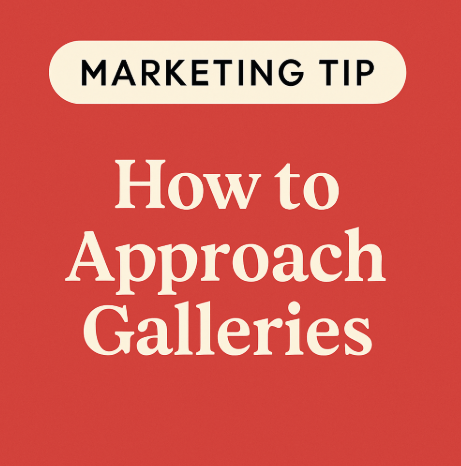Know What They Want
Before you reach out to any gallery, do your homework. Not all galleries suit all styles. Some focus on contemporary abstracts, others on realism or experimental installations. Spend time browsing their past exhibitions, social media, and online catalogue. If your work doesn’t align, don’t waste your energy or theirs.
✔️ Tip: Note the types of artists they currently represent. If your work feels complementary but unique, that’s a good sign.
Prepare Your Materials (Without Overthinking)
You don’t need a 47-page CV or a thesis-style artist statement. But you do need a few clean, professional materials ready to go:
- A short, clear artist bio
- A well-written artist statement that explains your work without sounding like a textbook
- 5–10 high-quality images of your work
- Titles, dimensions, mediums, and prices
- A website or online portfolio (Instagram doesn’t count alone!)
Make it easy for them to say yes. Or at the very least, to keep your work on file.
The First Email: Keep It Simple
Galleries are often inundated with long, rambling pitches. Yours should be short, clear, and respectful. Introduce yourself, share what you admire about the gallery, and include a link to your portfolio. Avoid attachments unless they specifically request them.
Hello [Gallery Name],
I’m a UK-based mixed media artist exploring urban decay through layered textures and metallics. I’ve followed your recent exhibitions and felt my work might align with the visual tone you champion. I’ve included a short introduction below and a link to my portfolio. I’d love to be considered for future opportunities or group shows.
Warm regards,
[Your Name]
Short. Respectful. Personal. And no grovelling in sight.
Don’t Expect Immediate Replies
Galleries are busy places. If you don’t hear back in a few weeks, it’s okay to follow up—once. But don’t chase, pester, or act wounded if you get no response. Rejection is often about timing or fit, not the quality of your work.
If a gallery does reply—even with a no—thank them. People remember artists who behave professionally.
Show Up in Person (When You Can)
Attending openings or group shows is a brilliant way to introduce yourself naturally. Don’t start with “Can I submit my work?” Start with, “I loved the piece by [Artist Name]” or “The layout of this show was really striking.” Build relationships. Ask questions. Learn what the gallery values.
Sometimes the path in isn’t through the door—it’s by being present in the room.
Keep Building, Regardless
Every ‘no’ is a step closer to a ‘yes.’ While you’re reaching out to galleries, keep updating your portfolio, entering group exhibitions, or showcasing your work online. The more active and visible you are in your art community, the more likely the right gallery will notice.
And remember: galleries aren’t gods. They’re partners. If you walk in seeing yourself as a working creative offering something valuable, it changes everything.

Love this article. So very helpful! Thank you!
Great article. Thank you!
Thank you 🙂